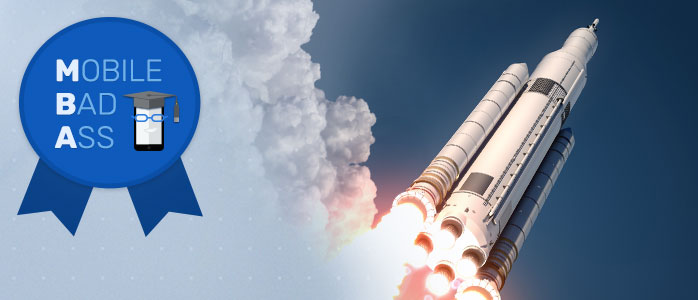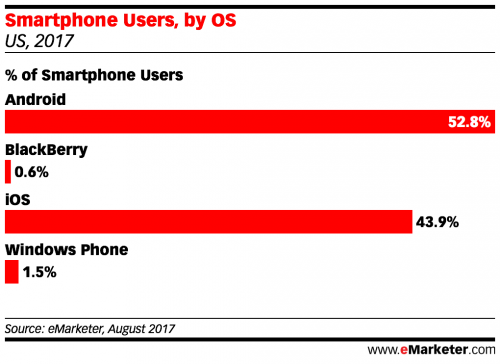

Week 5: What You Need to Know to Launch a Mobile App
Lesson Summary
Launch, the third phase of the mobile app lifecycle, will be familiar in many ways to marketers who have successfully launched any product or campaign. Added to the traditional rounds of reviews, revisions and approvals, however, are the processes of submitting your app to the App Store and/or Google Play. Once your app has been approved, the work of promoting it and building an audience begins. Many traditional marketing techniques are helpful for building awareness in the Launch phase, but marketers would be wise to emphasize app store optimization (ASO) and performance marketing in their strategies.
Learning Objectives
This lesson will give traditional marketing professionals a basic overview of the launch-related information specific to mobile app marketing—including app store review and optimization as well as performance marketing.
Key Points / Discussion
As with any product or campaign launch, a mobile app launch requires cycles of review, revision and approval to get everything ready for the launch date. Mobile, however, presents some additional hurdles you should account for in the planning process, including the unique tactical moves critical for building an app audience.
Launch Process Hurdle: App Store Review
 By and large, consumers in the US acquire their apps via the App Store or Google Play (though Amazon does have an App Store for Android and Fire TV). Both Apple and Google require review prior to publishing an app to the store, and each one has different guidelines to keep in mind. Here they are for reference:
By and large, consumers in the US acquire their apps via the App Store or Google Play (though Amazon does have an App Store for Android and Fire TV). Both Apple and Google require review prior to publishing an app to the store, and each one has different guidelines to keep in mind. Here they are for reference:
- App Store Pre-Review Checklist
- App Store Review Guidelines
- Google Play Developer Content Policy
- Android Developer Launch Checklist
Apple’s registration fees are higher and its review process takes more time. That said, Apple provides much more detailed guidelines for developers and at least a decent chance of getting promoted and achieving higher visibility than a new app on the Google Play Store.
The reality is, as of August 2017, roughly 53% of US smartphone users were on Android and 44% were on iOS devices (eMarketer.com). The vast majority of mobile apps created should be launched on both platforms.
App Promotion Hurdle: Breaking Through
According to the App Annie 2016 Retrospective, annual downloads reached over 90 billion last year, an increase of more than 13 billion across the App Store and Google Play. But here’s some tough love from the comScore 2017 US Mobile App Report:
- Just over half of all smartphone users don’t download ANY new apps in a month.
- The older the demographic segment, the less excitement consumers have about new apps (70% of those 18-34 say are “always looking for new and interesting apps,” vs. 37% of those 35-54 and only 22% of those over 55.
To break through user fatigue and apathy, your app needs a strong value proposition and a clear strategy for spreading the word with existing audiences via your website, social media handles, brick-and-mortar stores and any other traditional marketing channels that have worked in the past. You’ll also need to get savvy about some tactical moves that are unique to the app marketing arena.
Tactical Move: App Store Optimization
App store optimization is essentially SEO for apps, and sophisticated ASO strategies abound. Just like with SEO, ASO is about finding the most relevant keywords and balancing their relevance against the amount of competition for them. App titles and descriptions matter—even app icon design matters. App size is also a concern for many users, who may hesitate to download your app if it’s going to hog storage on their device. In fact, iOS users can’t download apps larger than 100MB if they’re not connected to Wi-Fi.
In a very real sense, app store optimization has a lifecycle all its own, with the most successful developers continually testing out different options, evaluating the results and tweaking their strategies. Think of the app store as a marketing channel and plan for it accordingly.
Tactical Move: Performance Marketing
In the 2017 comScore report mentioned above, US smartphone users were asked about where and how they discover new apps. It found users have relied year over year on mobile advertising as a source for app discovery. They consistently find, check out and download new apps while they’re playing or browsing on mobile. They cited other channels for app discovery (app store searches, word of mouth and traditional advertising), but less often and with less consistency.
Mobile ad campaigns that focus on delivering app installs are known as performance marketing (or simply user acquisition) campaigns. Here’s why performance marketing works so well for user acquisition:
- Users are already in a mobile environment, so they’re more likely to download a mobile app. For maximum effectiveness, install campaigns should target apps and mobile websites your desired audience is most likely to use.
- User acquisition campaigns can be highly cost-effective. There are several different performance advertising models available through a variety of partners. Each can result in new installs, but a CPI (cost per install) model is perfect if mobile user acquisition is your goal. Under a CPI agreement, you are charged a fixed or bid rate for your ad only when someone installs your app after clicking from the ad. It’s a very cost-effective way to increase your install base.
- Analytics, which can be added to your app via SDK, enable you to optimize your campaigns based on very granular metrics. For example, if you work with multiple ad partners, data can reveal that advertising on Network A delivers users who only open your app once or twice, while Network B delivers users who not only use your app every day but also spend money on in-app purchases.
Note: You’re not just looking for any downloads here. The goal is always to convert targets with the highest lifetime value (LTV)—prospects who will not only install your app but continue to deliver value over time. Brands in different verticals will define this value in many ways, but is generally understood to be a combination of retention (app usage over time), utilization (reaching a certain threshold of in-app behaviors) and spending money via subscription or in-app purchases. Finding and reaching high-LTV users requires testing and optimization of your performance marketing strategies and, most likely, a very strong partner. When campaigns are carefully tuned and optimized for high-LTV users, performance marketing offers the most bang for your buck and the highest potential for ROI among all audience building tactics.






